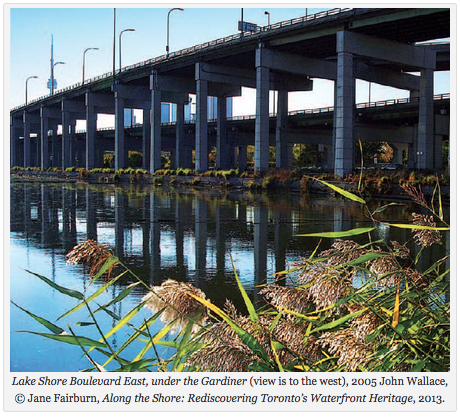
Love it or hate it, it’s decision time on the fate of the eastern portion of Toronto’s concrete leviathan, the Gardiner Expressway. Built in the mid-1950s at the height of North America’s love affair with the car, the often reviled and strangely endearing serpentine creature conceived along the shore of Lake Ontario remains an iconic symbol of its time. In the post-war baby boom, the building of the Gardiner – and the very structure itself – represented modernity and the optimism of the times. And if it cut us off from the lake, who cared? What mattered most back then was providing the infrastructure that sustained almost exponential mid-century growth through a series of envisioned expressways (some realized, others denied), bisecting our river valleys and neighbourhoods and disconnecting us from our waterfront.
As it turns out, old Nessie is now well past her best-before date, both in terms of her crumbling physical attributes and in the thinking that made her so. But there’s no denying that even in today’s fast developing post-car-culture, it’s a delicious sin to climb onto the monster’s back and get from point A to point B in a hurry. Barring rush hour and unforeseen delays, she’s still one hell of an easy way to get around.
And that is the crux of the issue. Getting around. Ease of transportation. A few minutes of extra commuting time to and from the downtown core by city estimates, several more minutes by others, is the only argument presented for keeping a primped-up version of the Gardiner alive and chugging. If the beast is slain from Jarvis Street to the Don River to make way for an expanded Lakeshore Boulevard and the creation of a kinder, gentler, at-grade, multi-lane roadway, the city predicts that Toronto stands to lose 37 million dollars a year in revenue — a relatively paltry sum when considered in light of Toronto’s 2015 11.4 billion dollar operating budget.
In a bizarre turn of events, the city is making no definitive recommendation to Council as to what option they prefer, though the remove option was clearly put forward as the preferred option by staff in 2014.
Before I give you my take on things, it’s apposite to point out the size of the contemplated take-down should the remove (boulevard) option go ahead. What’s being suggested is not even remotely close to a complete razing of the Gardiner as we know it: about a mile stretch of the least busy and underused of portion of the Expressway would be brought to grade. The great sweep of the Expressway, where it connects with the Don Valley Parkway would be remain, though it would be repositioned and re-modeled at a lower grade. The tear down approach opens up the largest swath of land for development and therefore city revenue, likely far in excess of any proposed loss due to transportation delays.
Mayor John Tory, along with a cadre of well meaning, though uninspiring Councillors, offer the almost doubly more expensive hybrid approach, which is essentially a reiteration of the status quo, only worse. In this version, the east end of the Gardiner remains to the mouth of the Don River, albeit with reconfigured on and off ramps. The gateway at Cherry Street to the Port Lands and the Crown jewel of future waterfront development will now be buttressed by four, rather than two ramparts to facilitate new ramps to the Expressway.
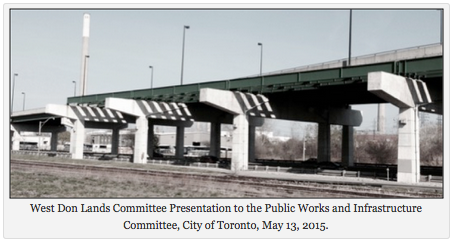
As an added bonus, you get the same old Expressway, hogging the water’s edge at the Keating Channel Precinct and dominating all other uses, until it mercifully curves northward at the mouth of the Don River. You can view the contrasting visualizations below, but the old adage possibly rings truer: You can’t make a silk purse out of a sow’s ear. Period.
Click one of the arrows on the image below to see how the Keating Channel transforms with the removal of the Gardiner.
It is indeed ironic that the end game for a small portion of the Expressway comes at a time when the waterfront, from east to west, is springing to life. Unprecedented lakefront renewal in Toronto is already well underway, with millions of tax payers’ dollars flowing into projects that have re-invigorated the downtown and notable sections of the city’s over 26 mile shore (witness Mimico and Port Union Waterfront Parks). From the Rouge River to Etobicoke Creek, Torontonians are taking back their waterfront and rediscovering their historic ties to the lake that lie at the very heart of the city’s identity.
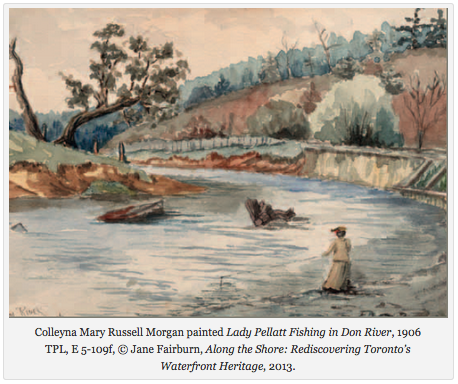
And that issue – identity – brings me to the studies trotted out by planners about experiences in other cities and countries – New York, Chicago, Asia. The stories of their smart, new waterfront boulevards and demolished expressways, though instructive, offer incomplete solutions. We are not New York. Beyond radically different site conditions, Toronto has an entirely different history and sensibility that I believe, makes us often charmingly and sometimes stubbornly adverse to change. We are, by nature, circumspect people.
But we have to take a leap of faith on this one.
This is why:
Toronto stands to gain infinitely more in the long term by removing the Expressway than maintaining it.
The tear down option proposes that the newly reconfigured boulevard be removed from the water’s edge at the Keating Channel Precinct. The roadway, and the link to the Don Valley Parkway only re-emerge near the mouth of the Don River, opening up space for an expansive promenade with full access to the Channel, connectivity with the harbour to the west and the yet-to-be naturalized and re-invigorated mouth of the Don River to the east. Placing vehicular traffic in behind a corridor of buildings to the north allows the water to become the primary focus, to be enjoyed for generations to come. It is an approach that celebrates and strengthens Toronto’s connection to the lake, the natural world and the passing of the industrial age. It is a bold, visionary move for the twenty first century and beyond.
And what about getting around? If you’re travelling along the lake from the downtown to Leslieville, or the Beach, or Scarborough, or to points farther east, yes there will be slightly more time in the car for the foreseeable future while transit catches up. Yes, there will be some congestion. And yes, the feet of politicians of all stripes will have to be held to the fire regarding the implementation of the Keating Channel Precinct and the greening of the Don River.
In light of the massive work to be done and the inevitable complaining and gnashing of teeth that will follow, some Councillors may decide that it’s simply more expedient to support the hybrid option. But those folks won’t be the ones who will be remembered in the long run. We will remember and laud the leaders who choose to embrace a bold vision for the future – a vision that the city so desperately needs. That simple, revolutionary act will take some courage.





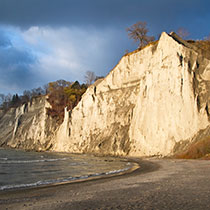
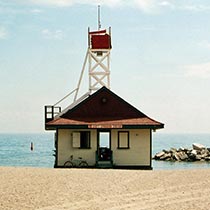
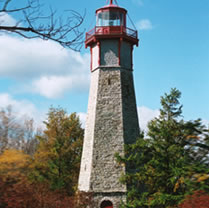
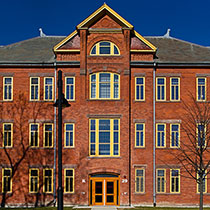
{ 1 trackback }